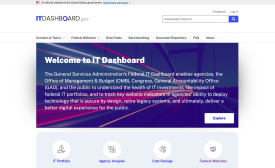Federal courts eye move to hybrid cloud

The judiciary anticipates moving to a hybrid cloud environment and issued a request for information on cloud services and providers as it updates its acquisition strategy.
Specifically, the Administrative Office of the United States Courts wants to learn more about other agencies’ multi-phased approaches to cloud adoption.
Currently, federal courts have on-premise cloud using VMware and Red Hat’s OpenStack Platform, as well as Office 365 in a Microsoft Azure environment. But the judiciary plans to expand off-premise.
Among the information the office is seeking from industry are details on contracts single cloud brokers have won to provide multi-hybrid cloud environments and procurement methods used to provision those environments quickly.
AOUSC also wants to know how well providers’ cloud services integrate with others for “seamless interoperability” and how long it’s previously taken them to receive Federal Risk and Authorization Management Program (FedRAMP) high and medium authorization because the court system relies on applications with a range of security postures.
“How do you monitor thousands of devices spread across multiple vendor solutions for unacceptable risk postures?” the office asks in its RFI.
The judiciary asks providers if they produce real-time data on the status of the entire cloud environment and individual systems and apps within the environment, as well as if they allow customers to access their incident reporting system in the event of network outages, bandwidth shortages and service spikes.
While the RFI won’t directly lead to any awards, the U.S. Courts office also questions how long the app migration process takes and if providers offer VIP support services for expedited delivery.
The court system wants to ensure the cloud provider or broker it ultimately chooses has legacy system expertise in house or can quickly acquire it in the event of an issue.
“The judiciary has the potential to have in place multiple highly complex integrations between cloud environments and internal legacy solutions,” reads the RFI.






